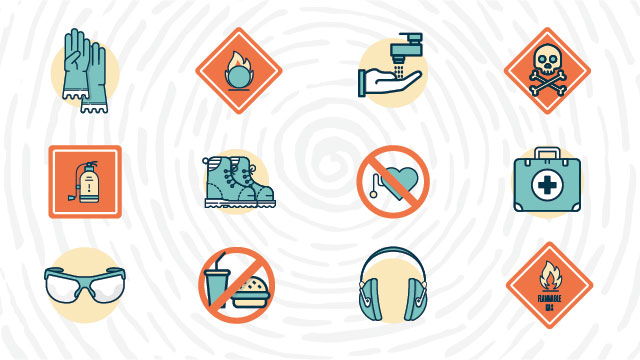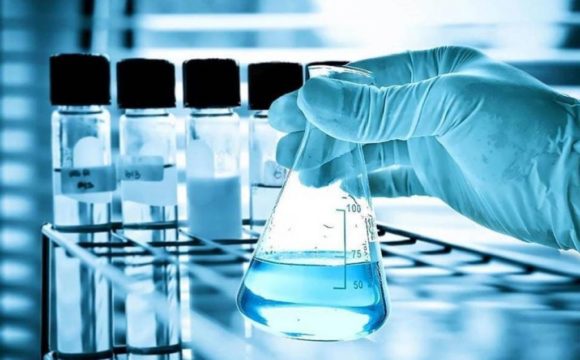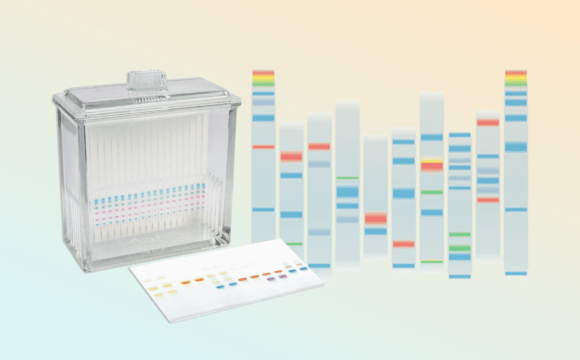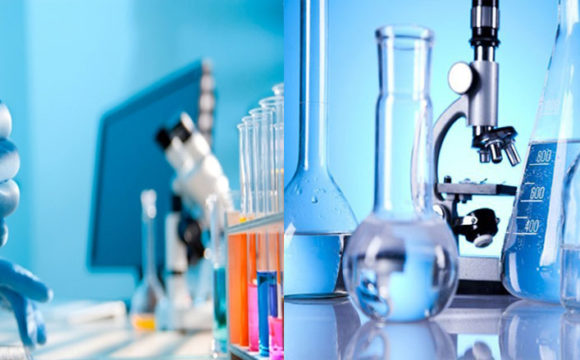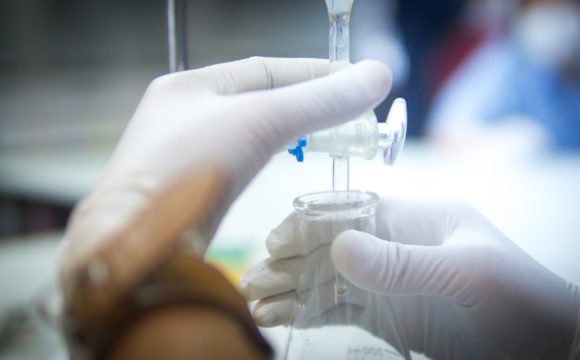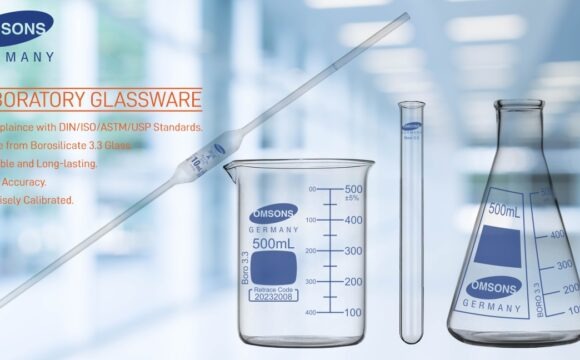Working in a chemistry lab can always be fun, without laboratories scientist is a man with no arms. However working in a lab is not so easy, it comes with its own set of laws for precautionary actions which if not followed may lead to a disaster! Whether you are a lab technician, a student, or a scientist, it’s crucial to know basic chemistry lab safety rules to prevent any unforeseen circumstances. A complete understanding of potential hazard and risks from using chemicals or equipment’s in a lab will allow you to progress your work with ease leading to timely & effective research studies.
Let’s enlist a few potential risks and subsequent safety steps need to be followed in a chemistry laboratory.
Decoding Dress Code…
- While entering in the lab one should wear a lab coat with full sleeves
- Wear shoes to avoid any damage to feet from acid spills
- Wearing full pants to avoid exposure to chemical spills
- Tie up hairs to prevent catching fire from a burner or a chemical reaction
- While carrying out any chemical reaction make sure to wear safety goggles, this will protect eyes from harmful chemicals splashes
- Use gloves whenever performing an experiment to avoid chemical contamination as well as to prevent you from chemical exposure
Learning Hazard Symbols…
Learn about the general hazard symbols (GHS) before using any chemicals (given in figure below). There is a list of hazard symbols which mentions about the type of hazard from a chemical. For e.g. you will find fire symbol on flammable chemicals and should be used with care. Similarly, a high-risk chemical comes with a danger symbol. Basic understanding of these symbols will allow using of chemicals safely and efficiently.
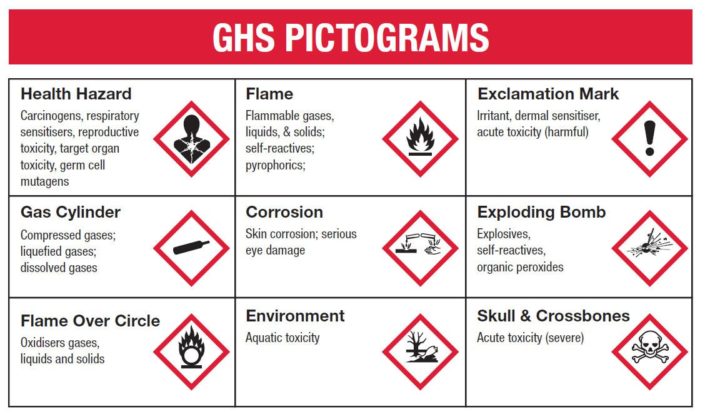
General Hazard Symbols – Know the different signs that you can find on chemical bottles
(Source: https://www.seton.net.au/ghs-sign-ghs-pictograms.html)
Handling Chemical Spills…
One of the common hazards of chemistry lab is suffering from chemical spills. If there is accidental chemical spills follow basic steps –
- Remain calm and inform immediately to the lab manager
- Don’t touch or smell any spilled chemical without knowing about it
- Evacuate lab if a huge chemical spill has taken place and inform safety team immediately
- In case you spill the chemical try to neutralize it. For e.g. acid spills can be treated using a base such as baking soda etc
- If the chemical has spilled on your skin, immediately rinse the affected area under water thoroughly to prevent any bruises. Try to reach a safety station as soon as possible
- In case of a chemical spill into eyes, immediately rinse with water for at least 20 mins and connect to a doctor for immediate support
Following the Basics…
- Staying alert in chemistry lab towards unsafe conditions of procedures, working instruments, and expiry chemicals, and bringing corrections to them can be key in avoiding hazards
- Keeping the lab clean and labeling all chemicals appropriately along with the date of open and date of expiry
- Storing chemicals under referred storage conditions and keeping flammable chemicals away from direct heat exposure
- Always pour the highly concentrated solution in a low concentration solution to avoid violent reactions and spills. E.g. adding acid into the water rather than adding water into acids
- All lab equipment and instruments should be used after reading the instrument manual. Overheating of instruments should be avoided. If noticing any type of noise from instruments report to the lab manager immediately
Way to Chemical Waste Disposal…
Do not throw chemicals directly into drain or dustbin; follow proper disposal guidelines to avoid any chemical contamination into the environment. The Environment Protection Agency has set certain rules for the disposal of hazardous and radioactive chemicals to prevent any environmental damage.
The Helping Hand, Safety Equipments…
Fire Blanket – A fire blanket is made up of non-inflammable fiber; use it for small or large fire by covering yourself in it. However, avoid using it if a person’s clothes are on fire as it creates a chimney effect and causes more burns to a person’s body.
First Aid Kit– the kit contains disinfectants, medicines, and bandages to meet emergency first aid requirement.
Fire Extinguisher – Fire extinguishers come in different types – CO2 and Foam extinguishers. Foam extinguishers can be used for most of the fires and are often called ABC fire extinguisher. CO2 extinguisher is useful to prevent lab fires but should not be used on a person as it is extremely cold.
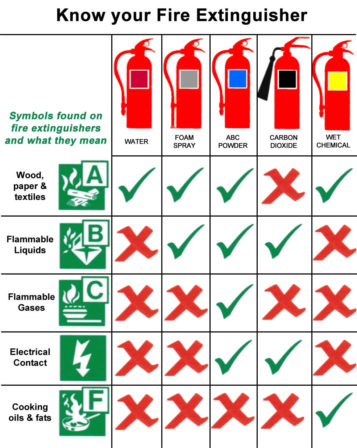
Different Types of Fire Extinguishers
(Source: https://www.tecservuk.com/2017/06/28/what-type-of-fire-extinguisher-should-be-used/)
Way Forward…
Safety doesn’t occur accidentally, it depends on one’s state of mind. Laboratory safety has always been a case of concern for the scientific community as it sets liability on the institutions towards individuals working in the lab as well as for those residing nearby. Thus, providing necessary training and understanding basic lab safety guidelines can prevent hazardous accidents to occur. Thus, Accident prevention should be your first call of action!



